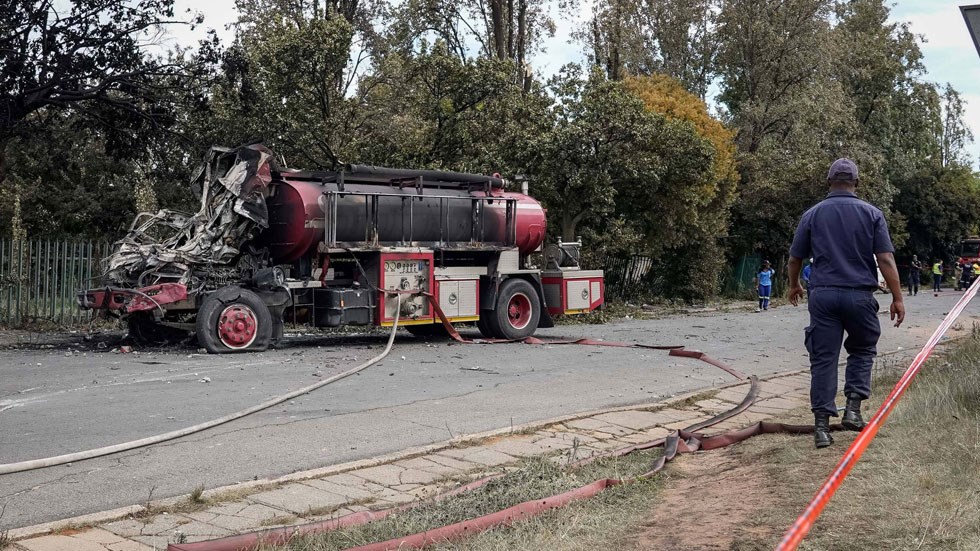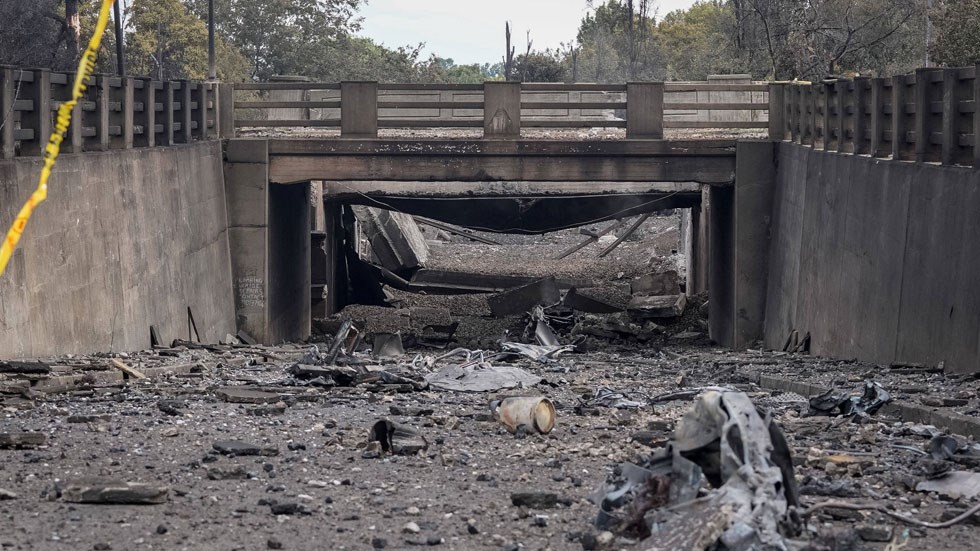Boksburg Blast Victims Deserve Investigation Report That is Not Buried
Forty-one people died when a road tanker exploded in the Boksburg suburb of Johannesburg in 2022. Process safety specialist Motlatsi Mabaso asks whether the lessons learned will ever be made public
ON CHRISTMAS Eve 2022, in the Boksburg suburb of Johannesburg, South Africa, a road tanker carrying liquefied petroleum gas (LPG) exploded killing 41 people in what is thought to have been a boiling liquid expanding vapour explosion (BLEVE) event.
The major incident took place in a residential area close to Tambo Memorial Hospital after the tanker became wedged under a bridge.

At the time of writing, no incident investigation report is available. A dangerous goods supply chain national task team has been assembled, coordinated by the Department of Transport, but the leader of the task team could not confirm the progress of the investigation.
However, from information available in the public domain, this is what I have been able to piece together:
- The road tanker (assumed to be full and carrying approximately 30 t (60,000 L) of LPG) became lodged under a low bridge between its origin (Port of Richards Bay) and its destination (Botswana). Following the driver’s attempt to move it, damage to the tanker occurred. The South African online news source the Daily Maverick quotes the Ekurhuleni Emergency Services as saying: “The vehicle’s release valve caught on the bridge and the fire started.” From my knowledge of LPG road tanker construction, I infer that the journalist may have misheard the phrase “release” valve and that the emergency services were referring to the [pressure] “relief” valve on the roof of the tanker.
- The point of damage became the location from which flammable vapour was released from an initial pressure of approximately 4 bar gauge (as per the vapour-pressure curve for a 50–50% mix of butane and propane). This led to a loud hissing or whistling noise which attracted the attention of members of the public, including residents in nearby homes, who approached the scene to take a closer look.
- A small flash fire or vapour cloud explosion occurred (not the main event) attracting even more bystanders to the area. There may have been a number of causes of ignition of the vapour, including motor vehicles that were attempting to pass the tanker or bystanders with mobile phones or cigarettes.
- The small flash fire or vapour cloud explosion resulted in burn-back to the leak source resulting in the formation of a torch fire. The flame engulfed the tanker, leading to direct heating of the LPG inside. Eyewitness accounts suggest the torch fire lasted in the region of 45 minutes before further escalation occurred.
- The main explosion took place. Casualties included bystanders, residents in nearby homes and people inside Tambo Memorial Hospital. The bridge also sustained a significant amount of damage, while the hospital suffered structural damage.
Using my own knowledge to join the dots between point 4 and point 5, I believe that due to the heating effect of the torch fire on the shell of the vessel, the LPG began to boil. The boiling resulted in an increase in pressure inside the vessel (due to more vapour being present as the LPG boiled). When the pressure inside the tanker exceeded the design pressure of the tanker shell, an explosion took place. It is highly likely that this explosion was a BLEVE.

Amateur video footage after the incident shows victims who had their clothing either melted on to their skin or burned away to reveal damaged skin beneath. According to the Netherlands Organisation for Applied Scientific Research (TNO) Green Book, this indicates exposure of thermal radiation greater than 50 kW/m2 over a short period of time. The injuries and fatalities observed on the day were likely a combination of exposure to high thermal radiation levels as well as a significant amount of explosion overpressure.
The need for a technical investigation
The Boksburg tanker explosion differed from other recent industrial incidents in South Africa in so much as it occurred very publicly. There were a number of eyewitness accounts, and extensive amateur video footage of the incident detailing the largest explosion and the aftermath. The accounts and footage captured the attention of the entire country and brought several issues into public focus, including transportation of dangerous goods on public roads, process safety in general and the state of municipal infrastructure.
Companies are legally required by the Promulgation of Major Hazard Installation Regulations to report major incidents or near-misses to the Department of Employment and Labour, the local government in their area, and the supplier of the substance involved. At present companies are not legally required to publicly release incident reports or lessons learned related to major incidents which occur at their premises.
Below are just three of the major industrial incidents that have occurred in South Africa since 2004:
- an explosion at the Ethylene Plant at Sasol’s Secunda facility in September 2004. According to reports, six people lost their lives
- an explosion at the Cape Town Refinery, run by Astron Energy (owned by Glencore), occurred in July 2020 when the refinery was undergoing a restart after prolonged maintenance
- an explosion at the Engen Refinery in Durban (owned by Petronas) in December 2020 leaving seven people injured
It has, unfortunately, become commonplace for the companies involved to conduct their own internal investigations, resulting in lessons learned often failing to reach the public domain. A legal compliance and vehicle route audit was conducted after the Boksburg incident by Transheq, an independent road transport safety system auditor based in Johannesburg. In a television interview with South African news channel eNCA, Transheq director Richard Durrant confirmed he had studied documentation provided to him by the trucking company. “My scope was more on legal compliance and whether the driver and the vehicle were legally compliant and whether the driver was on the legal route,” said Durrant. “After studying the information, I found that there were no issues or variations of the route by the driver.”
However, Transheq’s audit was remote and not a forensic investigation and the report is not publicly available, leaving us with questions that still need answering.

What we need to understand after the Boksburg blast
- The role of the driver: His motivations, incentives, training, operating conditions, psychological wellbeing, and decision-making.
- The role of the logistics company: A June 2023 article in the Daily Maverick indicates the driver may have been lost and deviated from his route. What is the proper procedure in that case? Is it appropriate or does the company and others like it need to update their procedures in light of the incident? What training was provided to the driver and what were his expected actions when he reportedly paused to investigate whether his truck could successfully pass under the bridge? As far as the route analysis goes, how thorough was it and do other routes the company uses need further evaluation and risk assessment?
- The state of infrastructure in South African municipalities: Google Earth imagery of the bridge before the incident (November 2021) indicate a bridge height sign was present. However, it appeared faded and in poor condition. The state of infrastructure in many South African municipalities has deteriorated in recent years. Did that have a bearing on decisions leading up to the event?
- The emergency services response times: The Daily Maverick (June 2023) reported that initial calls to the City of Ekurhuleni fire department and the South African Police Service (SAPS) went unanswered, with the driver and his controller at labour broker Innovative Staffing Solutions (ISS) placing nine telephone calls (with an approximate wait time of 15 minutes) before the emergency services were finally reached. The US’ National Fire Protection Association (NFPA) Standard 1710 recommends a benchmark total response time of 320 seconds for no less than 90% of dispatched incidents. Response time in this case appears to have been considerably longer than this, with 30 minutes elapsing between the driver notifying the ISS controller of the accident and gas leak, and the Ekurhuleni Fire Department arriving on the scene. This slow response time must be investigated and corrected by the City of Ekurhuleni and the SAPS.
- Emergency service mitigating actions: BLEVEs are a known hazard outcome preceded by a direct heating event on a pressurised vessel containing a liquefied flammable gas such as LPG. When they finally did arrive, did the emergency response personnel correctly recognise the danger associated with LPG? Would the most appropriate response, rather than dousing the flames, have been to evacuate those present to a pre-defined distance defined in the US Department of Transport’s Emergency Response Handbook 2020 (also used outside of the US)?
Conclusion
Because the tanker in the Boksburg blast was en route to its destination, the investigation falls under the remit of the Department of Transport (DoT) and the police.
The worry is that the investigation will only focus on criminal culpability. And while a criminal investigation is important, especially to the families who lost loved ones, without a proper technical investigation we risk not knowing exactly how and why the incident occurred. Trying to extract lessons from major incidents based on media reports, eyewitness accounts and amateur video footage is far from ideal. That lack of knowledge opens us up to the risk of a similar tragedy in the future, perhaps with even more devastating consequences.
It is clear South Africa needs to instigate a body similar to the US’ Chemical Safety and Hazard Investigation Board (CSB), which has a legal mandate to investigate major chemical incidents, providing publicly available reports, simulations, and recommendations for industry consideration. Only then can we be sure the lessons of Boksburg, and incidents like it, will truly be learnt.
Recent Editions
Catch up on the latest news, views and jobs from The Chemical Engineer. Below are the four latest issues. View a wider selection of the archive from within the Magazine section of this site.




